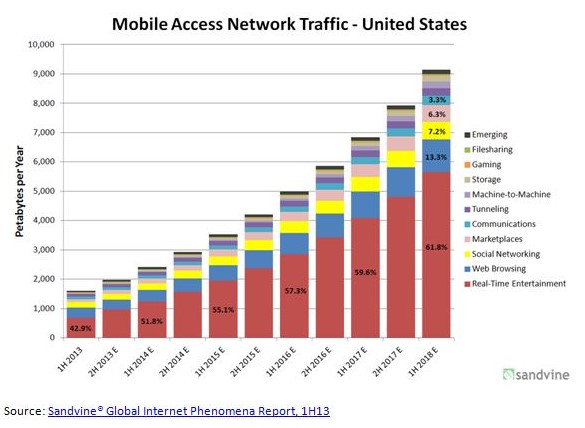
The recent edition of Public Utilities Fortnightly features an article that showers virtues of subscribed energy – an all-you-can-eat energy bonanza. There is a reason I’ve grown to crinkle my nose at buffets!
Consumers subscribe to Amazon, Netflix, SiriusXM, and per the article, even Lyft is offering a new subscription service for all the rides you want in a month. In the1990s, one token would allow me to ride the New York subway all day – forever actually. Now there is a subscription for you – all the toe fungus, gout, and hair implant remedy ads you can stand for 75 cents.
Maybe the most famous transition to subscription services was data over cellular networks. People got tired, or lazy, of keeping an eye on their data to control cost, and they got tired of their kids racking up massive charges. Solution: $90 flat subscriptions for all-you-can-eat data[1].
What if we applied the same model to residential consumers of electricity?
Electricity v Data
First, there is that Moore’s Law thing. Simply put, Moore’s law says the speed of computation doubles every two years. Really? A guy gets his name forever stamped in the annals of the Smithsonian for making a simple observation like this? What a con.
Data Transmission Acceleration
Ok, mobile data transmission doesn’t keep pace with Moore’s Law, but look at any mobile data traffic trend, and you will find exponential growth. See nearby.
The U.S. market is nearly saturated with smartphones, so it isn’t smartphone growth driving the data traffic growth. It’s smartphone use. Are data subscription prices rising at anything near this rate? No.
Here is what happened in the transition to fixed smartphone data contracts:
- Customers got frustrated with data charges and didn’t want to deal with convincing their teenagers to limit their data usage. That is like stopping water from running downhill.
- Cellular providers thought, ok, we can provide unlimited data to everyone for just a little more than the fixed cost plus usage charge.
- Customers were happy.
- Cellular providers were happy.
Why were cellular providers happy? Because soon, they would be able to reduce their data handling costs faster than traffic increased. I.e., the new charges covered their costs and then some.
Stubborn Physics
I’ve said it before, and I’ll say it again: electricity flows at 60 Hz at precise voltages throughout the grid over copper and aluminum lines with near-zero tolerance for fluctuations of available power. There are NO opportunities for fiber or engineering packet optimization, compression, backhauls, meshes, beam-forming, and so forth, for electricity[2]. Therefore, comparatively, nothing can be done to reduce electricity delivery cost as was accomplished with data delivery cost.
Second, policy constructs provide almost no incentive whatsoever to utilities to minimize cost. This is the tradeoff made when providing one company rights to 100% of a market. Utilities have to serve everyone, and they can only get what they can convince regulators it costs to deliver to everyone, plus a necessary weighted cost of capital (profit) for investor owners.
Third, even generators in deregulated markets are governed by firm caps of physics, whether it is the strength of carbon steel, temperature of the river, strength of bridges, length of rail cars and over-the-road trucks, and economics. Trust me; these factors all limit power plant efficiency.
Subscription Rollout
Bad Option #1
So a utility has very stubborn physics, and they must serve everyone. They pick a fixed subscription cost to serve a customer and send them the offer to subscribe. The customer looks at the offer, and they look at their bills. The offer is either higher or lower than what they are paying. Presumably, the bill would be the mean of the millions of residential bills sent each month. Those who would pay less (the heavy users) take the offer. Those who would not, do not. How do you make up the difference to achieve the revenue requirement across all consumers?
Bad Option #2
Or suppose you flip everyone to a subscription. In this case, more than half the consumers will pay more because the mean is higher than the median. Those customers are going to be flaming hot because they are subsidizing the 4,000 square foot McMansions in the gated, cloistered community.
Destinations for Failure
The article suggests consumers would also like subscriptions because it shifts energy-cost risk from the customer to the utility. Utilities would manage this risk with efficiency and demand response.
First, suppose the owners of the 4,000 square foot McMansions cover their Jacuzzi when it’s not in use. Once their utility bill falls by 60% on a subscription service, they will cease covering the Jacuzzi and light up the place until it is visible from the international space station. Woohoo! Talk about rebound!
Second, after starting with a 40% deficit because the McMansion used 40% more than the mean, and after starting with an additional 40% deficit because “who cares” as described in the previous paragraph, the utility is going to reduce the cost of serving this customer by 45%? (an exercise in math for the reader) Good luck with that. The customer went on this rate because they want control, and that control is “on.” McMansion owner response: Take the clipboard and drive that EV back to the office because we’re not playing your conservation game!
Here ends a baker’s dozen reasons a subscription for electricity isn’t going to work.
[1] Note: I don’t know what it costs, and I will not look because AT&T and Verizon ads will follow me for the next umpteen months.
[2] I had to look these terms up because I know next to nothing about data transmission.







Where’s the original article you’re referring to?
Brian – here is a link to the article: https://www.fortnightly.com/fortnightly/2018/09/what-netflix-and-amazon-pricing-tell-us-about-rate-design%E2%80%99s-future
It requires a subscription, however. Thanks!
This is a truly fascinating topic because it’s more convoluted than either of you realize, and paradoxically you’re both right and wrong at the same time. Essentially, you’ve both decided to argue for two different points that are actually feedback loops that regulate the other.
For example (and try to follow me here). First, the idea that if you get an energy efficient refrigerator that you somehow account for that minuscule savings and consume more electricity is pretty silly, as you pointed out with many examples. And YET the data constantly shows that we, as a society are becoming more energy efficient but still exponentially consume more energy.
Say that you, buy an energy efficient refrigerator (saving $60 per year) the minuscule savings isn’t enough to incentivize you to alter your behavior on a daily basis and be wasteful, but that $60 you save is invariably spent. For instance if I saved that $60 I might treat myself to a dinner out and buy steak. Well that steak, required magnitudes more energy to produce than if I ate non-meat food, both in energy to raise the cattle, the food the cattle itself ate, and to the energy to transport it to me. Or say instead that I went out and spent it on a video game which I then played, consuming electricity and whos purchase of the video game supported the programmers who spent years going about their lives creating the game in the first place. Or say that instead I had enough money to take a community college course, well then I spend energy charging my electric car to go drive there, and I fund the college that lights up the classroom etc etc.
Human activity is a function of energy consumption. The more active we are in life, the more energy we consume to facilitate that activity. When you save money, no matter how little, that money goes to paying for some item or activity that directly increases ACTIVITY in the economy, and therefore in the national consumption of electricity. Now, while being energy efficient doesn’t incentive people to be wasteful, it by the very definition of physics causes us to increase our ability to be active in the word and therefore consume more electricity. Even if you put that money in the bank, the bank is going to turn around and lend it to a startup company that would have otherwise not been able to exist if it hadn’t been for you saving a few dollars and putting it in the bank.
Robert Michaels was right about the rebound effect but wrong about why it was happening or where it was coming from in the first place. It wasn’t because they bought an energy efficient refrigerator and started wasting electricity, it was because they maybe saved enough to decide to use one vacation day that year and stayed home just for one day playing video games, and that negated the whole years savings.
Now! After having supported him being right for all the wrong reasons, does that mean that I’m advocating for not supporting energy efficiency measures? Absolutely not! That energy efficiency helped increase our wealth which we then put back into the economy spuring growth, all of which invariably lead us to increase energy consumption in aggregate.
Energy efficiency is what permits us to cause other energy expenditures elsewhere in the economy; the only difference is, the place where that energy is being expended is more useful to society and improves all of our lives, society.
Energy efficiency—at its very core—is simply the concept of not needlessly wasting energy, when it can be consumed elsewhere for a better, more productive use. Better to have an energy efficient light-bulb that doesn’t produce waste heat, so that you can save a few extra dollars for a nice steak once a year that goes towards paying for a farmers livelihood or supporting the restaurant it was purchased at.
Another amusing (true story) example; say that one night in Southern California everyone is so good at being energy efficient that for a period of the night that the CAISO grid accidentally produces more electricity than is being consumed. For a small period of time, the real-time energy price for electricity becomes $.05. That’s negative. So they’re paying you to consume. Well due to this negative price, a coworker with his smart-meter that allows for real-time pricing of electricity is incentivized to turn on a crypto-currency mining machine, that consumes electricity to produce bitcoin. The state of California is essentially paying us money to take the extra electricity off the grid, so I’m being PAID to increase my consumption of electricity BUT in a way that creates profit for me, society and the economy as a whole INSTEAD of being wasted in a light bulb at your house. You didn’t save electricity—you helped it to be expended more profitably.
And lastly, that paper he wrote was written quite some time ago. I believe now a days he would tend to agree with this line of thinking and support energy efficiency measures in many pragmatic circumstances. I got dinner with him just a few months ago. He’s actually my old professor of mine and for quite some time I argued with him that he was wrong to fight energy efficiency measures thinking that they hurt the economy, because in my view the energy efficiencies saved are what permit even more lucrative transactions elsewhere int the economy that are worth more than the burden that energy efficiency places on the economy.
Trippy, huh?
Thanks, Brian. There isn’t much to argue with there. I would just add that a subscription, or 100% fixed charge month to month, could greatly exacerbate what you describe. The people whose bill would go down (heavy users) would now have no incentive to curtail usage at all. Now they have more money to spend and consume more money at the same time. On the other hand, that money they are not sending to the utility will be paid by someone else, because that’s just how the regulated monopoly works.